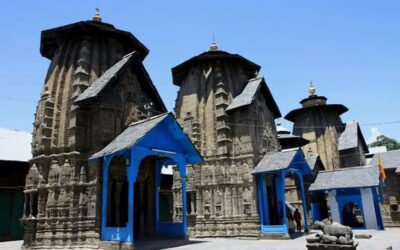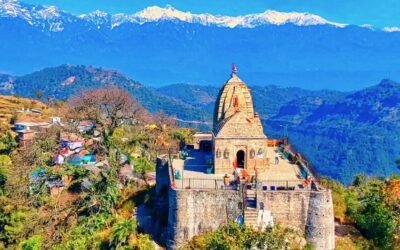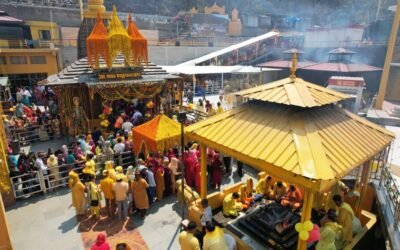Perched dramatically on a conical hill at 4,166 meters (13,668 ft) above sea level, overlooking the turquoise ribbon of the Spiti River, the Key Monastery (also spelled Ki, Kye, or Kee) is the largest and oldest monastery in Spiti Valley. A living center of Tibetan Buddhist learning, this 11th-century gompa is a spiritual lighthouse in the stark, high-altitude wilderness of Himachal Pradesh.
🌄 Location & Accessibility
- Location: 15 km from Kaza, Lahaul & Spiti district, Himachal Pradesh
- Altitude: 4,166 meters above sea level
- How to Reach:
- By Road:
- From Manali via Rohtang Pass and Kunzum La (open May–Oct)
- From Shimla via Kinnaur (open year-round, weather permitting)
- By Rail: Nearest station – Shimla or Pathankot
- By Air: Bhuntar (Kullu), Shimla, or Chandigarh airports
- From Kaza: 15 km drive or 8.5 km trek via Kibber road
- By Road:
🛕 Historical & Spiritual Significance
Founded in the 11th century by Dromtön, a disciple of Atisha, Key Monastery has weathered Mongol invasions, Dogra attacks, fires, and earthquakes, yet it stands resilient—rebuilt and revered through the ages. It became a Gelugpa (Yellow Hat) monastery in the 17th century and is now home to over 200 monks.
The monastery is also associated with Lochen Tulku, the 24th reincarnation of the great translator Rinchen Zangpo, and was blessed by His Holiness the Dalai Lama, who inaugurated a new prayer hall here in 2000.
🕉️ Deity & Worship
Key Monastery follows the Gelugpa (Yellow Hat) tradition of Tibetan Buddhism and is dedicated to Vairocana Buddha, the celestial Buddha of the Dharmadhatu (realm of truth). The main prayer hall enshrines a statue of Vairocana, surrounded by Bodhisattvas and guardian deities, forming a mandala of cosmic wisdom. The monastery also houses sacred images of Tara, Padmasambhava (Guru Rinpoche), and Lochen Tulku, the reincarnation lineage associated with the gompa.
Worship includes daily chanting of sutras, butter lamp offerings, and ritual use of horns, drums, and conch shells. Monks engage in meditation, philosophical debate, and tantric rituals, especially during the Cham Festival, when masked dances invoke protective deities and retell Buddhist legends. Devotees offer khatas (white scarves), light lamps, and seek blessings for wisdom, clarity, and spiritual liberation in the high silence of the Himalayas.
🏛️ Architectural Highlights
- Built in Pasada style, resembling a fortress with labyrinthine corridors, low rooms, and narrow staircases
- Houses three floors:
- Underground: Storage
- Ground Floor: Assembly hall, monk quarters
- Upper Floor: Temples, library, and Dalai Lama’s chamber
- Adorned with 14th-century murals, thangkas, stucco images, and ancient manuscripts
- A collection of weapons and wind instruments used during the Cham dance festival
🎉 Festivals & Monastic Life
- Cham Festival (Summer): Masked dances, rituals, and music performed by monks
- Daily Prayers: Visitors can join the monks in morning or evening chants
- Stay with Monks: Budget accommodation and meals available in monk quarters—an immersive spiritual experience
🏞️ Nearby Attractions
- Kibber Village: One of the highest inhabited villages in the world
- Chicham Bridge: Asia’s highest suspension bridge
- Langza, Hikkim & Komic: Fossil-rich villages and the world’s highest post office
- Dhankar Monastery & Tabo Monastery: Other ancient gompas of Spiti
🙏 Spiritual Experience
The Key Monastery is not just a monument—it’s a living mandala, where the chants of monks echo through stone halls and the wind carries centuries of devotion. Whether you come to meditate, photograph, or simply sit in silence, this gompa offers a soul-stirring communion with the divine and the mountains.




